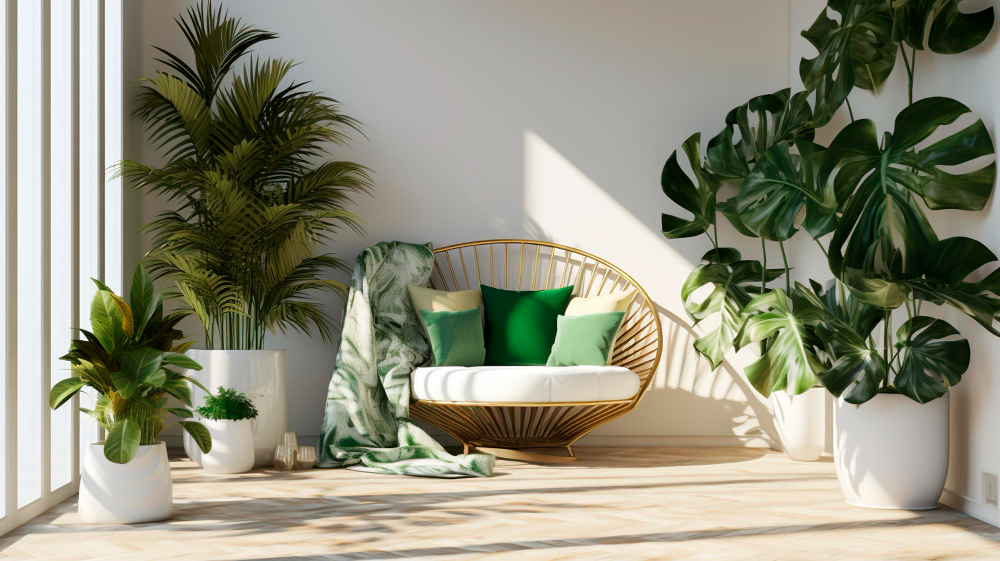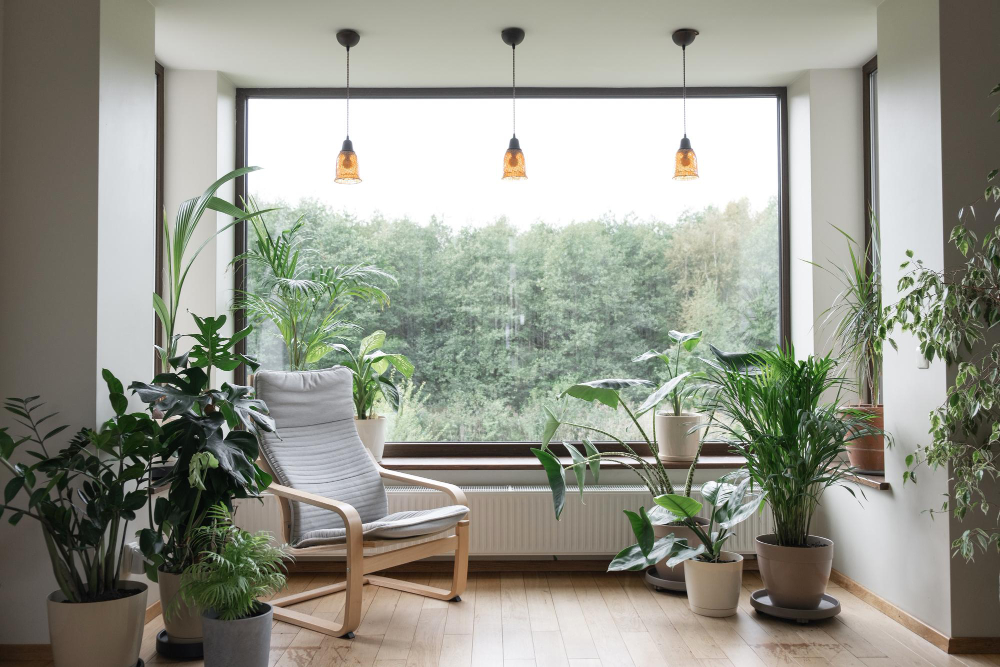Last updated on
With more time spent indoors and technology increasing daily, bringing ourselves back to nature is more important than ever. One way to do so is to integrate the outdoor environment into modular homes.
These natural design elements have countless advantages, including health and relaxation benefits. Not to mention, adding these components to your modular home creates a sense of beauty and harmony.
This article explores integrating biophilic principles into modular homes, presenting a seamless blend of nature and cutting-edge design.
Nature Blending: “Biophilic Design”

So, is there a word for blending nature into your home? Yes! Biophilic design.
In 1984, Harvard naturalist Edward O. Wilson explored the concept of Biophilia, which translates to the “love of life.” His book highlights humans’ unique bond with nature and the challenges we face in enclosed urban settings.
Biophilic design is an excellent solution to our lack of connection to nature. The objective of this design style is to include elements like natural light, ventilation, plant life, organic shapes, water features, and organic materials in our homes.
The Best Biophilic Design Elements
Now that we’ve discussed biophilic design, let’s dive into the best natural design elements for your modular or ECM Home.
Natural Ventilation

Utilizing natural ventilation helps improve indoor air quality and reduces reliance on air conditioners. Features like floor-to-ceiling or clerestory windows help air flow naturally throughout the structure. This enhances comfort and promotes a sense of connection to your outdoor environment.
Organic Materials
Natural materials like timber, stone, bamboo, or reclaimed wood are excellent biophilic design elements. These materials add warmth and texture to the home’s interior and embody the inherent beauty of nature.
Daylight
Consider features such as large windows, skylights, or glass doors to flood interior spaces with natural light. Abundant daylight reduces reliance on artificial lighting, promotes a sense of connection to the outdoors, and can improve mood.
Organic Shapes and Patterns
Shapes and patterns can be used to mimic elements found in nature. These design features could include curved walls, archways, or fluid lines in architectural details and furnishings. By incorporating these elements, the modular home will evoke a sense of tranquility, promoting overall well-being.
Natural Colors
Choose a color palette inspired by nature, like earth tones and neutrals. These hues create a calming and restorative atmosphere while reflecting the surrounding landscape. Incorporate these natural colors in wall finishes, textiles, and décor to establish a cohesive and inviting interior environment.
Sunrooms
Sunrooms help blur the boundaries between indoors and outdoors. These spaces allow you to immerse yourself in nature while enjoying the comforts of home.
Bridging Your Indoor and Outdoor Spaces
Many of the above design elements are incorporated when the modular home is constructed. However, you can include other biophilic features to increase your home’s indoor-outdoor harmony. Let’s check out a few below!
Vertical Gardens or Vegetation
Integrate vertical gardens or living walls to introduce lush vegetation into your environment. This greenery will improve air quality and add a touch of natural beauty to your space.
Fountains and Ponds
Incorporate water features like fountains or ponds into your outdoor landscape to create a soothing ambiance. The sound of flowing water promotes relaxation and is a focal point for outdoor gatherings.
Sustainable Decking Material
Choose sustainable decking material—like composite lumber or reclaimed wood—for outdoor decks and patios. These eco-friendly options minimize environmental impact while providing a durable outdoor living space.
Large Sliding Glass Doors
Install sliding glass doors to connect your indoor and outdoor living areas seamlessly. These expansive openings allow easy access to outdoor amenities, bringing nature closer to your indoor environment.
Native Plant Landscaping
Design the outdoor landscape with native plants that thrive in your local climate. Native landscaping enhances biodiversity and reduces the need for irrigation and chemical inputs.
Nature-inspired Outdoor Furniture
Choose outdoor furniture crafted from natural materials and complement the surrounding environment. Nature-inspired designs create a cohesive living space that reflects the beauty of the outdoor world.
Bring Plants Inside
Use potted plants and indoor greenery throughout your modular home to bring the benefits of nature indoors. Plants add visual interest and a sense of vitality to interior spaces.
Outdoor Fire Pit
Install an outdoor fire pit or fireplace to create a cozy gathering spot for friends and family to enjoy evenings outdoors. The warmth and ambiance of a crackling fire enhance the outdoor living experience and extend the usability of outdoor areas.
Open-air Shower or Bath
Consider adding an outdoor shower or bath for a rejuvenating natural experience. Outdoor bathing facilities provide a unique connection to the natural environment and offer a luxurious retreat within the comfort of your home.
The Benefits of Biophilic Design
Biophilic design offers many benefits beyond aesthetics, enriching physical and psychological well-being.
These natural elements enhance mental health by fostering a deeper connection to the outdoors. Biophilic design promotes relaxation and improves mood by incorporating natural elements into living spaces.
Exposure to nature has also been linked to increased productivity and creativity, and environments designed with biophilic principles can stimulate cognitive function and lead to higher concentration levels. Not to mention, studies show that these designs often reduce stress and anxiety levels!
Beyond personal benefits, embracing biophilic design demonstrates a commitment to environmental stewardship by promoting sustainable practices such as using eco-friendly materials, energy efficiency, and biodiversity conservation.
Integrating biophilic design principles into modular homes can enhance one’s quality of life and cultivate a greater sense of harmony with the natural world while fostering a more sustainable future.
Table of Contents




